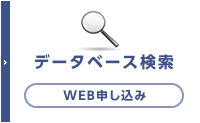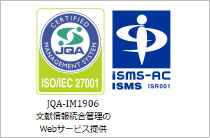ホームIMICライブラリMMWR抄訳2021年(Vol.70)COVID-19パンデミック中の州、部族、地方、海・・・
2021/07/02Vol. 70 / No. 26
MMWR70(26):947-952
Symptoms of Depression, Anxiety, Post-Traumatic Stress Disorder, and Suicidal Ideation Among State, Tribal, Local, and Territorial Public Health Workers During the COVID-19 Pandemic — United States, March–April 2021
COVID-19パンデミック中の州、部族、地方、海外領土の公衆衛生従事者におけるうつ病、不安、心的外傷後ストレス障害、自殺念慮の症状 ― アメリカ、2021年3月~4月
COVID-19のパンデミックが始まって以来、一般の人々と医療従事者にてメンタルヘルス疾患が増加している。パンデミックへの対応と異例の予防接種キャンペーンの実施に対する長期間の要求により、公衆衛生従事者にはメンタルヘルスに悪影響が出るのと同様のリスクがある可能性があるが、COVID-19パンデミック中の公衆衛生従事者のメンタルヘルス状態の程度は不明である。2014年の調査では、アメリカには25万人近くの州および地方の公衆衛生従事者がいると推定されている。これらの従事者のメンタルヘルス疾患を評価するために、2021年3月29日~4月16日に非確率抽出をベースとしたオンライン調査を実施し、州、部族、地方、海外領土の公衆衛生部門の公衆衛生従事者におけるうつ病、不安、心的外傷後ストレス障害(PTSD)、自殺念慮の症状について評価した。26,174人の回答者のうち、52.8%が過去2週間にメンタルヘルス疾患の症状があったと回答し、症状の割合はうつ病が30.8%、不安が30.3%、PTSDが36.8%、自殺念慮が8.4%であった。メンタルヘルス疾患の症状の有病率が最も高かったのは29歳以下の回答者(13.6%~47.4%)と、すべての年齢のトランスジェンダーまたはノンバイナリーの人(30.4%~65.5%)、多民族(12.1%~43.4%)で、PTSDの症状の有病率は院卒の学歴の回答者にて高かった(40.7%)。ほとんどの回答者(92.6%)がCOVID-19対応活動に直接取り組んでおり、大多数(59.2%)が、2020年3月以降の典型的な1週間では41時間以上働いていた。休みが必要な時に仕事を休めかったと回答した公衆衛生従事者では、休みをとれたと回答した人よりも有害なメンタルヘルス症状を回答する割合が2倍近く高かった。症状の重症度は、毎週の労働時間とCOVID-19対応活動に費やされる労働時間の割合の上昇とともに増加した。公衆衛生従事者のメンタルヘルスの低下の原因または寄与する原因となる要因を排除、軽減、対処する予防対策を実施することで、緊急時のメンタルヘルスの転帰が改善される可能性がある。
References
- Czeisler MÉ, Lane RI, Petrosky E, et al. Mental health, substance use, and suicidal ideation during the COVID-19 pandemic—United States, June 24–30, 2020. MMWR Morb Mortal Wkly Rep 2020;69:1049–57. PMID:32790653 <https://doi.org/10.15585/mmwr.mm6932a1>
- Gainer DM, Nahhas RW, Bhatt NV, Merrill A, McCormack J. Association between proportion of workday treating COVID-19 and depression, anxiety, and PTSD outcomes in US physicians. J Occup Environ Med 2021;63:89–97. PMID:33201021 <https://doi.org/10.1097/JOM.0000000000002086>
- Wright HM, Griffin BJ, Shoji K, et al. Pandemic-related mental health risk among front line personnel. J Psychiatr Res 2021;137:673–80. PMID:33189356 <https://doi.org/10.1016/j.jpsychires.2020.10.045>
- Beck AJ, Boulton ML, Coronado F. Enumeration of the governmental public health workforce, 2014. Am J Prev Med 2014;47(Suppl 3):S306–13. PMID:25439250 <https://doi.org/10.1016/j.amepre.2014.07.018>
- Kroenke K, Spitzer RL, Williams JB. The PHQ-9: validity of a brief depression severity measure. J Gen Intern Med 2001;16:606–13. PMID:11556941 <https://doi.org/10.1046/j.1525-1497.2001.016009606.x>
- Kroenke K, Spitzer RL, Williams JB, Monahan PO, Löwe B. Anxiety disorders in primary care: prevalence, impairment, comorbidity, and detection. Ann Intern Med 2007;146:317–25. PMID:17339617 <https://doi.org/10.7326/0003-4819-146-5-200703060-00004>
- Thoresen S, Tambs K, Hussain A, Heir T, Johansen VA, Bisson JI. Brief measure of posttraumatic stress reactions: Impact of Event Scale-6. Soc Psychiatry Psychiatr Epidemiol 2010;45:405–12. PMID:19479171 <https://doi.org/10.1007/s00127-009-0073-x>
- Duchaine CS, Aubé K, Gilbert-Ouimet M, et al. Psychosocial stressors at work and the risk of sickness absence due to a diagnosed mental disorder: a systematic review and meta-analysis. JAMA Psychiatry 2020;77:842–51. PMID:32236498 <https://doi.org/10.1001/jamapsychiatry.2020.0322>
- Adler DA, McLaughlin TJ, Rogers WH, Chang H, Lapitsky L, Lerner D. Job performance deficits due to depression. Am J Psychiatry 2006;163:1569–76. PMID:16946182 <https://doi.org/10.1176/ajp.2006.163.9.1569>
- Law PCF, Too LS, Butterworth P, Witt K, Reavley N, Milner AJ. A systematic review on the effect of work-related stressors on mental health of young workers. Int Arch Occup Environ Health 2020;93:611–22. PMID:31932956 <https://doi.org/10.1007/s00420-020-01516-7>
Copyright © 2013 International Medical Information Center. All Rights Reserved.












